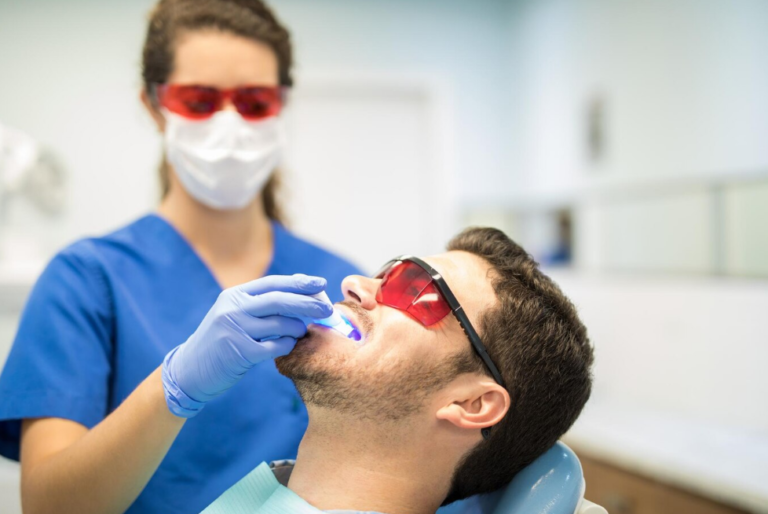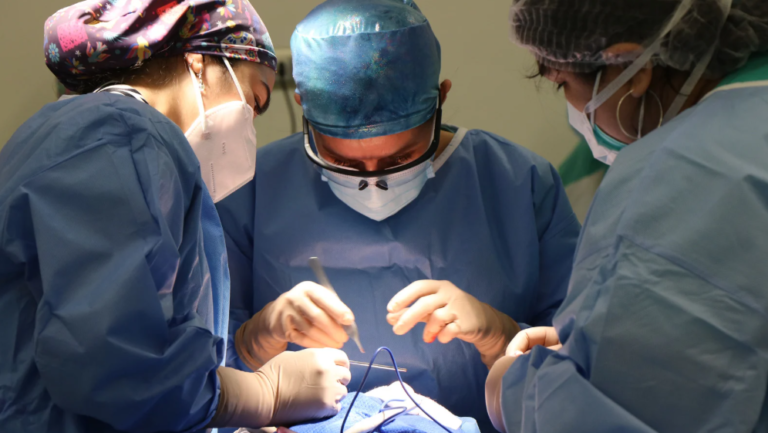What to Do in a Dental Emergency: Finding an Emergency Dentist in Toronto
Recognizing a True Dental Emergency
Distinguishing Urgent from Non-Urgent Issues
Okay, so how do you know if you really need to rush to an emergency dentist? It’s not always obvious. A minor toothache might be annoying, but it probably doesn’t warrant a late-night visit. However, severe pain, uncontrolled bleeding, or trauma to the face definitely do. Think about it this way: if it’s something that can wait a day or two without causing serious harm, it’s likely not an emergency. But if ignoring it could lead to permanent damage or infection, then it’s time to act fast.
Common Signs Requiring Immediate Attention
Here’s a quick rundown of situations that usually need immediate dental care:
- Knocked-out tooth: Time is of the essence to try and save it.
- Severe toothache: Especially if accompanied by swelling or fever.
- Uncontrolled bleeding: After an extraction or injury.
- Facial trauma: Injuries to the jaw or mouth.
- Infection: Signs include swelling, pus, and pain.
When to Seek Emergency Care Versus a Regular Appointment
It can be tricky to decide, right? Here’s a little guide to help you figure it out. If you’re experiencing any of the symptoms above, it’s probably an emergency. But what about other situations? A lost filling, a chipped tooth (if it’s not causing severe pain), or mild sensitivity can usually wait for a regular appointment. Basically, if you’re unsure, it’s always better to err on the side of caution and call an emergency dentist. They can assess your situation and tell you whether you need to come in right away.
It’s always a good idea to have a plan in place for dental emergencies. Know where the nearest emergency dentist is located, and keep their contact information handy. This can save you valuable time and stress when a crisis occurs.
Immediate Steps to Take During a Dental Crisis
Managing Pain and Swelling at Home
Okay, so you’ve got a dental emergency. First things first: pain management. Over-the-counter pain relievers like ibuprofen or acetaminophen can really help. Don’t exceed the recommended dosage, though. For swelling, ice is your best friend. Apply an ice pack to the outside of your cheek in 20-minute intervals (20 minutes on, 20 minutes off). This can reduce inflammation and numb the area a bit. Rinsing your mouth gently with warm salt water can also soothe irritated tissues. Avoid hot or cold foods and drinks, as they can worsen the pain. If you’ve had any dental work done recently, be extra careful around the area. Also, avoid chewing on the affected side.
Preserving a Knocked-Out Tooth
If a tooth gets knocked out, time is of the essence. Here’s what you gotta do:
- Handle the tooth carefully, holding it by the crown (the part you normally see). Avoid touching the root.
- Rinse the tooth gently with water if it’s dirty. Don’t scrub it or use soap.
- If possible, try to reinsert the tooth into its socket. Gently push it in with your fingers or by biting down softly on a clean cloth. Make sure it’s facing the right way.
- If you can’t reinsert the tooth, place it in a container of milk or saliva. These fluids help keep the tooth alive.
- Get to a dentist ASAP. The sooner you get there, the better the chances of saving the tooth.
Remember, the success of reimplantation depends on how quickly you act. Every minute counts. Don’t delay seeking professional help.
What to Do for a Chipped or Fractured Tooth
A chipped or fractured tooth can be painful and sensitive. Rinse your mouth with warm water to clean the area. If there’s bleeding, apply pressure with a clean gauze pad. Use an over-the-counter pain reliever if needed. If you can find the broken piece of tooth, save it and bring it with you to the dentist. Cover any sharp edges of the remaining tooth with dental wax or sugarless gum to protect your tongue and cheeks. Avoid eating hard or crunchy foods that could further damage the tooth. Call your dentist as soon as possible to schedule an appointment. They’ll assess the damage and determine the best course of treatment. Depending on the severity, they might be able to smooth out the chip, bond a filling to the tooth, or recommend a crown. If you need a local anesthetic like lidocaine, remember that “how long does lidocaine last” can vary, but it’s usually a couple of hours.
Finding an Emergency Dentist in Toronto
Finding yourself with a sudden toothache or injury can be super stressful, especially if it happens outside of regular business hours. Luckily, Toronto has options for emergency dental care. Knowing where to look can save you a lot of pain and time.
Searching for a Dentist Danforth for Urgent Needs
If you’re in the east end of Toronto, looking for a “dentist Danforth” who handles emergencies is a good starting point. Many dental offices in this area offer same-day appointments or have after-hours contact information. It’s worth calling around to see who can see you the soonest. Some dentists might even have a dedicated emergency line.
Utilizing Online Directories and Reviews
Online directories like Yelp, Google Maps, and specialized dental websites can be lifesavers. Search terms like “emergency dentist Toronto” will bring up a list of clinics. Pay attention to the reviews! Real patient experiences can give you a sense of the quality of care and how quickly they respond to emergencies. Look for dentists with consistently positive feedback, especially regarding their emergency services.
Checking for 24/7 Availability and Walk-In Options
Not all emergency dental clinics are created equal. Some operate 24/7, while others offer walk-in appointments during specific hours. If you have a severe issue that can’t wait, a 24/7 clinic is your best bet. Call ahead to confirm their availability and any specific procedures for walk-ins. It’s also a good idea to ask about their fees for emergency services, as they might differ from regular appointments.
Finding an emergency dentist doesn’t have to be a frantic process. Take a deep breath, use the resources available, and don’t hesitate to call multiple clinics to find the right fit for your situation. Your oral health is important, and getting prompt care can prevent further complications.
Preparing for Your Emergency Dental Visit
Information to Have Ready for the Dentist
When you’re rushing to the dentist in an emergency, it’s easy to forget important details. Try to gather as much relevant information as possible before you leave. This will help the dentist assess your situation quickly and accurately. Here’s what you should aim to have:
- A brief description of the problem: When did it start? What makes it worse or better?
- Your medical history: Any allergies, medications you’re taking, or relevant health conditions.
- Your dental insurance information: Have your card or policy details handy.
- Emergency contact information: In case the dentist needs to reach someone.
It’s also a good idea to write down any questions you have for the dentist. In the heat of the moment, it’s easy to forget what you wanted to ask. Having a list ensures you get all the information you need.
Understanding Potential Costs and Insurance Coverage
Dental emergencies can be expensive, and it’s important to have a basic understanding of the potential costs involved and how your insurance might cover them. Call your insurance provider beforehand if possible. Here’s a breakdown of what to consider:
- Typical Emergency Dental Costs: These can vary widely depending on the treatment needed. A simple exam and X-ray might cost one amount, while a root canal or extraction will cost significantly more.
- Insurance Coverage: Check your policy to see what percentage of emergency dental care is covered. Some policies have waiting periods or limitations on certain procedures.
- Payment Options: Ask the dental clinic about their payment options. Many offer payment plans or accept credit cards. Some may also work with financing companies.
| Procedure | Estimated Cost | Insurance Coverage (Example) | Out-of-Pocket Cost |
| Emergency Exam | $100 – $200 | 80% | $20 – $40 |
| X-Ray | $50 – $150 | 80% | $10 – $30 |
| Simple Extraction | $150 – $300 | 50% | $75 – $150 |
| Root Canal (Molar) | $1000 – $2000 | 50% | $500 – $1000 |
Arranging Transportation to the Clinic
Getting to the emergency dental clinic can be challenging, especially if you’re in pain or have taken medication. Plan your transportation in advance. Here are some options:
- Drive Yourself: If you’re able to drive safely, this is often the quickest option. Make sure you’re not taking any pain medication that could impair your driving ability.
- Ask a Friend or Family Member: Having someone drive you can be a huge help, especially if you’re feeling anxious or need assistance after the appointment.
- Use a Ride-Sharing Service: Services like Uber or Lyft can be convenient, but be aware that wait times may vary.
- Public Transportation: If the clinic is accessible by public transportation, this can be a cost-effective option. Check the schedules and plan your route carefully.
What to Expect at an Emergency Dental Clinic
So, you’ve found an emergency dentist and you’re heading to the clinic. What happens next? It can be a little nerve-wracking, especially if you’re already in pain. Here’s a breakdown of what you can probably expect during your emergency dental visit.
Initial Assessment and Diagnosis
First things first, the dentist will want to figure out what’s going on. This usually starts with a quick chat about your symptoms and medical history. They’ll ask about the pain, when it started, and anything that might have caused it. Then comes the exam. Expect the dentist to take a close look at your teeth, gums, and mouth. X-rays are pretty common too, as they help the dentist see what’s happening beneath the surface. All this information helps them make a diagnosis and figure out the best way to treat you.
Pain Management During the Visit
No one wants to be in pain, especially at the dentist! The emergency dentist will do their best to make you comfortable. Local anesthetic is a common way to numb the area being treated. For more severe pain or anxiety, they might offer other options, like nitrous oxide (laughing gas) or even a prescription for pain medication. Don’t be afraid to tell them how you’re feeling; they want to help you get through it.
Temporary Solutions Versus Permanent Treatments
Emergency dental visits often focus on getting you out of immediate pain and stabilizing the situation. That means you might get a temporary filling, a re-cemented crown, or antibiotics for an infection. These are great for now, but they’re not always permanent fixes. The dentist will explain what they’re doing and whether you’ll need to come back for more treatment later on. Think of it like this:
- Temporary filling: A quick patch to protect the tooth.
- Antibiotics: Fighting the infection.
- Pain relievers: Managing the discomfort.
It’s important to remember that emergency dental care is often about addressing the most pressing issue. While they’ll try to provide the best possible solution, a follow-up appointment with your regular dentist is usually needed for a more permanent fix. This ensures that the underlying problem is fully resolved and prevents future emergencies.
Preventing Future Dental Emergencies
Maintaining Good Oral Hygiene Practices
Okay, so you’ve just dealt with a dental emergency. That’s rough! Now, let’s talk about how to keep it from happening again. It all starts with the basics, but seriously, nailing these basics is key. Think of it like this: you wouldn’t skip oil changes on your car and expect it to run forever, right? Same deal with your teeth.
- Brush at least twice a day. Don’t just swipe; really get in there.
- Floss daily. Yes, every day. Get the floss between each tooth and under the gumline.
- Use a fluoride toothpaste. Fluoride is your friend; it strengthens enamel.
Consistent oral hygiene is the cornerstone of preventing most dental problems. It’s not just about having a pretty smile; it’s about keeping your teeth and gums healthy for the long haul.
Regular Check-Ups with Your Dentist Danforth
Seriously, don’t skip your dental appointments. I know, life gets busy, and maybe you’re not thrilled about someone poking around in your mouth. But regular check-ups are like preventative maintenance for your teeth. Your dentist can spot problems early, before they turn into full-blown emergencies. Plus, they can give your teeth a professional cleaning, which is way better than what you can do at home.
Here’s a quick rundown of what to expect:
| Frequency | Purpose |
| 6 Months | Cleaning, check for cavities, gum disease |
| Annually | X-rays to check for hidden problems |
Wearing Mouthguards for Sports Activities
If you play sports, especially contact sports, a mouthguard is non-negotiable. It’s like wearing a helmet for your teeth. A custom-fitted mouthguard from your dentist is the best option, but even an over-the-counter one is better than nothing. Think about it: a few bucks for a mouthguard versus thousands for emergency dental work? Easy choice.
Consider these sports where a mouthguard is a must:
- Hockey
- Football
- Basketball
- Martial Arts
- Skateboarding
Follow-Up Care After an Emergency
After dealing with a dental emergency, it’s easy to think the worst is over. But proper follow-up care is super important to make sure everything heals correctly and to prevent future problems. Don’t skip these steps!
Adhering to Post-Treatment Instructions
Following your dentist’s instructions after an emergency procedure is key for a smooth recovery. This might include taking prescribed medications (like antibiotics or pain relievers), using a special mouthwash, or avoiding certain foods. Make sure you understand everything clearly before you leave the clinic. If something is unclear, call them back and ask! Here’s a quick checklist:
- Take medications as prescribed.
- Use mouthwash as directed.
- Avoid hard or sticky foods.
- Attend all follow-up appointments.
Scheduling Subsequent Appointments for Permanent Solutions
Emergency dental visits often address the immediate problem, but they might not be the final solution. For example, a temporary filling might need to be replaced with a permanent one, or a root canal might require a crown. Make sure you schedule these follow-up appointments to get your mouth back to tip-top shape. Leaving things unfinished can lead to more problems down the road.
Monitoring for Any Lingering Issues
Keep an eye out for any signs of infection or complications after your emergency treatment. This could include increased pain, swelling, redness, or pus. If you notice anything unusual, contact your dentist right away. Don’t wait until it gets worse! Here are some things to watch for:
- Persistent pain that doesn’t improve with medication.
- Swelling that gets worse after the first few days.
- Fever or chills.
- Unusual discharge or bad taste in your mouth.
Ignoring these signs can lead to serious health issues. It’s always better to be safe than sorry when it comes to your dental health. If you’re unsure about something, call your dentist. They’re there to help!
Wrapping Things Up
So, there you have it. Dealing with a dental emergency can be pretty stressful, but knowing what to do makes a big difference. Remember, acting fast is key, and don’t be afraid to reach out for help. Toronto has plenty of emergency dentists ready to get you feeling better. Keep these tips in mind, and hopefully, you’ll be back to smiling in no time, even if things feel a bit rough right now.
Frequently Asked Questions
How do I know if I have a real dental emergency?
A true dental emergency is when you have a lot of pain, bleeding that won’t stop, or a tooth that’s been knocked out. If you’re not sure, it’s always best to call a dentist.
What should I do if my tooth gets knocked out?
If your tooth gets knocked out, pick it up by the top part (not the root). Rinse it gently if it’s dirty, and try to put it back in its spot. If you can’t, keep it in a cup of milk or your cheek, and get to the dentist right away.
How can I find an emergency dentist in Toronto quickly?
You can search online for ’emergency dentist Toronto’ or ’24-hour dentist near me.’ Websites like Google Maps or Yelp can also help you find dentists with good reviews who are open when you need them.
What information should I bring to an emergency dental visit?
It’s a good idea to have your ID, insurance information (if you have it), and a list of any medicines you take. Also, be ready to explain exactly what happened and how you’re feeling.
What happens when I go to an emergency dental clinic?
The dentist will first look at your mouth to figure out what’s wrong. They’ll help with the pain and then either fix the problem right away or give you a temporary solution until you can come back for a full fix.
How can I stop dental emergencies from happening again?
Brush and floss your teeth every day, and see your regular dentist for check-ups twice a year. If you play sports, wear a mouthguard to protect your teeth from getting hurt.






